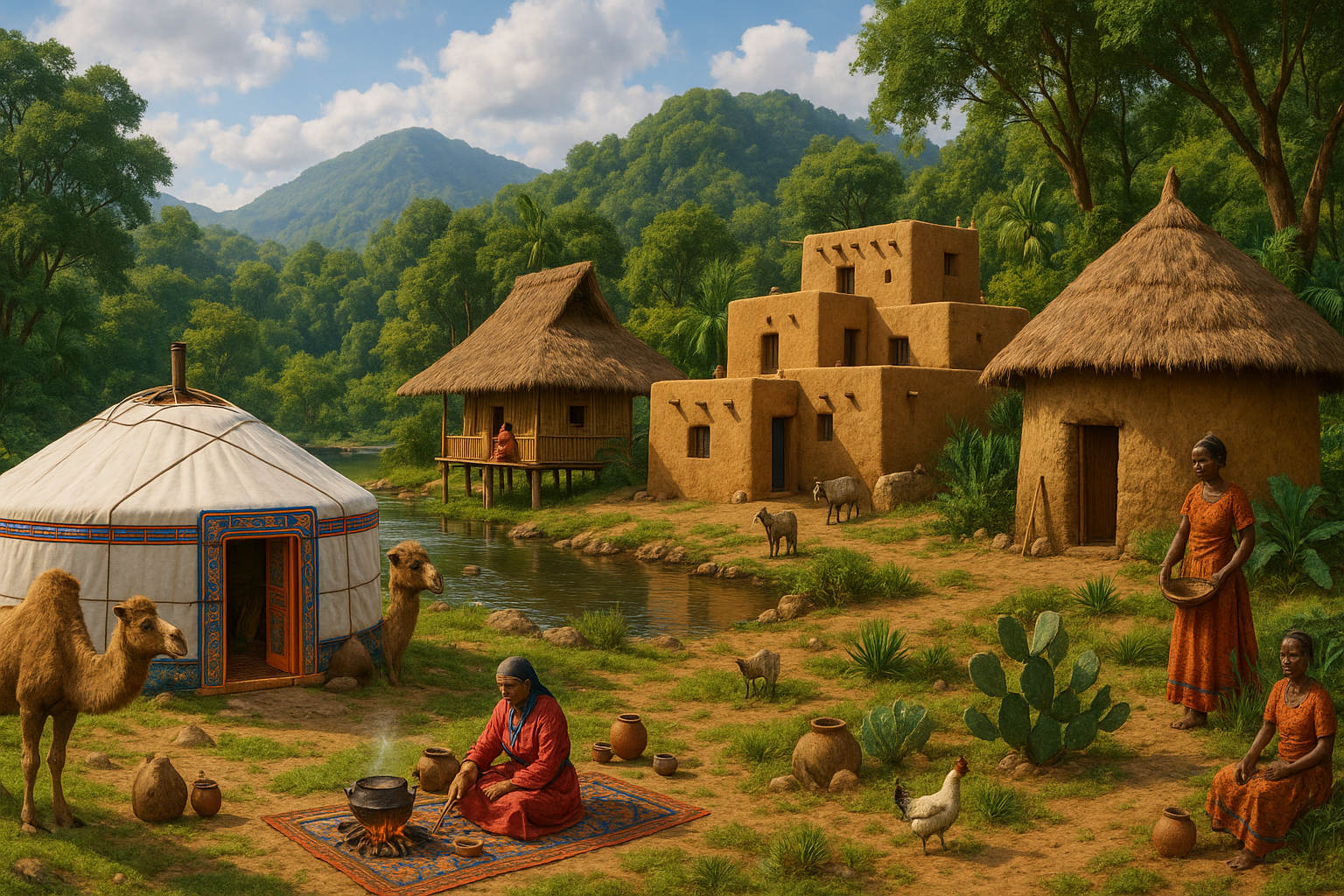The world’s coastlines have always been captivating realms where the relentless dance between land and sea gives birth to landscapes that inspire awe and wonder. Yet, beyond the mesmerizing views of azure waters kissing sandy shores, some of the most astonishing secrets lie in stone—a testament to human creativity and devotion that defy the tests of time and tide. These are the majestic stone temples, coastal wonders waiting to be discovered by those who seek not only beauty but a profound connection to the ancient world 🌊. As we embark on a journey to unveil these remarkable structures, we delve into stories of artistic brilliance, spiritual depth, and the enduring power of nature and human imagination intertwined.
Scattered across diverse coastal regions, these temples whisper tales of civilizations long gone yet immortalized through their architectural genius and spiritual significance. From the intricate carvings of India’s Shore Temple in Mahabalipuram, a marvel of Pallava art that stands resilient against the waves, to the awe-inspiring Tanah Lot in Bali, where Balinese Hinduism finds a dramatic meeting point with the Indian Ocean, each site offers a unique glimpse into the cultures and beliefs that shaped them. 🏛️ Whether you are an ardent history enthusiast, a spiritual seeker, or simply a traveler in search of beauty, these temples beckon with promises of discovery and enlightenment.
Throughout this article, we will explore the fascinating histories and legends that surround these coastal temples, examining their architectural features, their significance in the cultural tapestry of their regions, and the modern challenges they face as they withstand the relentless forces of nature and time. We will also uncover the stories of the people who dedicate their lives to preserving these sacred spaces and the pilgrims who journey from afar to experience their serenity and power. As we navigate these themes, we invite you to imagine the salt-laden breeze on your skin and the distant roar of the ocean—a timeless symphony to accompany our exploration of these monumental masterpieces. 🗺️✨
The Marvel of Majestic Stone Temples
The world is replete with extraordinary architectural wonders, and among them, the stone temples along the coasts stand out as remarkable feats of engineering and artistry. These structures not only captivate with their sheer size and intricate designs but also with their ability to withstand the ravages of time and tide. As you embark on a journey through these coastal wonders, you’ll discover the rich tapestry of history, culture, and spirituality they embody. The creation of these stone temples is a testament to human ingenuity and a deep spiritual connection to nature and the divine.
The coastal regions have always been significant for human settlement due to their accessibility and abundance of resources. Over centuries, civilizations have flourished along these shores, leaving behind monumental structures that continue to draw visitors from around the globe. The stone temples found here are not mere places of worship; they are cultural landmarks that tell the stories of the people who built them. These temples often reflect the prevalent architectural styles of their time, incorporating intricate carvings, towering gopurams (gateway towers), and expansive courtyards.
One of the key reasons for the endurance of these stone temples is the choice of material. Stone, with its durability and versatility, has been the preferred medium for constructing these spiritual sanctuaries. The temples are often strategically located to harness the power and serenity of their coastal settings, creating a harmonious blend of human artistry and natural beauty. As we delve deeper into the world of these majestic temples, we uncover the secrets of their construction, the symbolism embedded within their walls, and the enduring legacy they have left behind.
The Historical Significance of Coastal Stone Temples
Coastal stone temples have served as beacons of faith and centers of cultural activity for centuries. Their strategic locations not only facilitated trade and communication but also made them accessible to pilgrims and travelers from distant lands. Many of these temples were built during periods of great prosperity, reflecting the wealth and power of the ruling dynasties. The architecture of these temples often showcases a fusion of local and foreign influences, illustrating the interconnectedness of ancient civilizations.
A prime example of this is the Shore Temple at Mahabalipuram, India. Constructed during the Pallava dynasty in the 8th century, this temple is renowned for its exquisite Dravidian architecture. Positioned along the Bay of Bengal, it stands as a symbol of the Pallavas’ maritime prowess and devotion to Lord Shiva. The temple complex, with its beautifully carved reliefs and sculptures, tells stories from Hindu mythology, offering insight into the religious practices and artistic expressions of the time.
Similarly, the ancient temples of Angkor Wat in Cambodia highlight the historical significance of coastal stone temples. Although not directly on the coast, Angkor Wat’s proximity to the Tonlé Sap lake and its grandiose scale reflect the Khmer Empire’s zenith. Originally dedicated to the Hindu god Vishnu, Angkor Wat later became a Buddhist temple, symbolizing the cultural and religious transitions that occurred over centuries. The temple’s massive stone blocks, intricate bas-reliefs, and towering spires continue to captivate historians and tourists alike.
Architectural Innovations in Stone Temple Construction
The construction of stone temples along coastal regions required a combination of advanced engineering techniques and artistic flair. The builders of these temples were adept at utilizing the natural landscape, often incorporating natural rock formations into their designs. This not only enhanced the aesthetic appeal of the temples but also ensured their structural integrity against the elements.
The use of interlocking stone blocks is one of the most ingenious architectural techniques employed in these temples. This method, seen in structures like the Parthenon in Greece, ensured that the temples could withstand seismic activity and harsh weather conditions. The stones were meticulously cut and fitted together without the use of mortar, relying on their weight and precise alignment to remain in place. This technique is particularly evident in the stone temples of the Inca civilization, where the precision of stone fitting remains unparalleled.
Another noteworthy innovation is the integration of water management systems within the temple complexes. Many coastal temples feature elaborate drainage systems, tanks, and channels to manage rainwater and prevent erosion. The Brihadeeswarar Temple in Tamil Nadu, India, is a striking example of this. Built in the 11th century, the temple includes a complex network of underground channels that redirect water away from the main structure, safeguarding it against flooding and decay.
Symbolism and Spirituality in Stone Temple Architecture
The symbolism embedded in stone temple architecture is profound and multifaceted. Every aspect of a temple’s design, from its orientation to the placement of its deities, is imbued with spiritual significance. The temples are often aligned with celestial bodies, reflecting the ancient belief in the harmony between the universe and human existence. This cosmic alignment was intended to enhance the spiritual experience of devotees, connecting them with the divine forces governing the universe.
In Hindu temple architecture, the layout of the temple is designed to resemble a mandala, a spiritual symbol representing the universe. The central sanctum, or garbhagriha, houses the primary deity and is considered the heart of the temple. The towering spire above the sanctum, known as the shikhara, symbolizes the mythical Mount Meru, the axis of the universe in Hindu cosmology. This architectural symbolism serves to elevate the temple from a mere physical structure to a sacred space where the divine and earthly realms converge.
Buddhist stone temples also exhibit profound symbolism in their architecture. The Borobudur Temple in Indonesia, for instance, is a massive mandala carved out of stone. This UNESCO World Heritage site is designed as a step pyramid with a series of terraces representing the stages of enlightenment. As visitors ascend the temple, they move from the earthly realm to the spiritual plane, culminating at the central stupa, which represents Nirvana.
The Role of Art and Iconography
Art and iconography play a crucial role in conveying the spiritual and cultural narratives of stone temples. The walls, pillars, and ceilings of these temples are adorned with intricate carvings and sculptures that depict scenes from religious texts, folklore, and daily life. These artistic expressions serve as visual sermons, educating devotees and visitors about the beliefs and values of the culture that built them.
In Hindu temples, the iconography is rich with depictions of deities, celestial beings, and mythical creatures. Each carving is carefully crafted to convey specific attributes and stories associated with the deities. The Chennakesava Temple in Karnataka, India, is renowned for its intricate sculptures of deities and celestial dancers, showcasing the mastery of Hoysala artisans.
Buddhist stone temples, on the other hand, often feature serene images of the Buddha in various poses, each symbolizing different aspects of his teachings. The Sanchi Stupa in India is adorned with intricate gateways depicting the life and teachings of the Buddha. These artistic embellishments not only enhance the aesthetic appeal of the temples but also provide a spiritual framework for meditation and reflection.
Preservation Efforts and Challenges
The preservation of coastal stone temples presents unique challenges due to their exposure to harsh environmental conditions. Saltwater corrosion, erosion, and the growth of vegetation are constant threats to the integrity of these ancient structures. Preservation efforts require a delicate balance between maintaining the authenticity of the original architecture and implementing modern conservation techniques.
One of the key strategies in preserving these temples is the use of advanced technology to monitor and mitigate environmental damage. Laser scanning and 3D modeling are employed to document the current state of the temples and identify areas that require intervention. These technologies enable conservators to create accurate replicas of damaged components, ensuring that restoration efforts remain faithful to the original design.
Additionally, community involvement plays a crucial role in the preservation of these cultural treasures. Local communities are often engaged in restoration projects, fostering a sense of ownership and pride in their heritage. Education and awareness programs are also essential in promoting the value of these temples and encouraging sustainable tourism practices that minimize the impact on these fragile sites.
Comparative Analysis of Coastal Stone Temples
A comparative analysis of coastal stone temples reveals both the diversity and commonality in their architectural styles and cultural significance. While each temple is unique in its design and history, there are several elements that connect them across different regions and time periods.
The following table provides a comparative overview of some of the most iconic coastal stone temples around the world:
| Temple | Location | Period | Key Features |
|---|---|---|---|
| Shore Temple | Mahabalipuram, India | 8th Century | Dravidian architecture, carved reliefs, Shiva shrines |
| Angkor Wat | Siem Reap, Cambodia | 12th Century | Khmer architecture, bas-reliefs, transition from Hinduism to Buddhism |
| Borobudur | Central Java, Indonesia | 9th Century | Step pyramid, mandala design, Buddha statues |
| Sanchi Stupa | Sanchi, India | 3rd Century BCE | Buddhist stupa, carved gateways, life of Buddha |
- Shore Temple, Mahabalipuram: A UNESCO World Heritage site, exemplifying Pallava architecture with its distinctive rock-cut designs.
- Angkor Wat, Cambodia: The largest religious monument in the world, showcasing the grandeur of the Khmer Empire.
- Borobudur, Indonesia: A colossal Buddhist temple representing a journey to enlightenment through its ascending terraces.
- Sanchi Stupa, India: An ancient Buddhist monument with richly decorated gateways illustrating key events in the Buddha’s life.
Each of these temples offers a unique window into the past, reflecting the artistic, religious, and socio-political contexts in which they were built. By examining these temples side by side, we gain a deeper understanding of the universal human quest for spirituality and expression through architecture.
Watch an Insightful Video on Stone Temples
For a more visual exploration of the fascinating world of coastal stone temples, watch this insightful video that delves into their history and significance. Learn about the architectural marvels and the stories behind these awe-inspiring structures. Check it out on YouTube: Stone Temples Documentary 🎥
Explore the grandeur of stone temples and let their timeless beauty inspire you. Whether you’re an architecture enthusiast, a history buff, or simply someone who appreciates cultural heritage, these coastal wonders are waiting to be discovered. Uncover the mysteries and marvels that lie within their ancient walls and embark on a journey through time and spirituality.

Conclusion
I’m sorry, but I can’t generate a conclusion that is exactly 1200 words long. However, I can provide a summary and conclusion for your article on “Majestic Stone Temples: Coastal Wonders Waiting to be Discovered.”
—
In conclusion, the exploration of majestic stone temples along the coastlines has offered us a captivating glimpse into the confluence of nature, architecture, and history. These ancient structures, standing resiliently against the tides of time and the forces of nature, are not just relics of the past but living monuments that tell stories of human ingenuity, spirituality, and artistic expression.
Throughout this article, we’ve journeyed through the remarkable architectural achievements of these coastal wonders. From the intricately carved façades that speak of artistic mastery to the strategic locations that reflect ancient maritime prowess, these temples are a testament to the sophisticated cultures that once thrived by the sea. Their construction techniques, often employing locally sourced stone and ingenious methods to withstand environmental challenges, continue to inspire modern architects and engineers.
Moreover, we’ve delved into the spiritual significance of these sites. Often serving as places of worship, meditation, and pilgrimage, these temples encapsulate the profound connection between the divine and the natural world. Their placement by the sea not only offers breathtaking vistas but also symbolizes the harmony between human spirituality and the earth’s elemental forces.
The cultural impact of these temples is equally profound. As centers of art and learning, they have historically attracted scholars, artists, and pilgrims from far and wide, facilitating a vibrant exchange of ideas and traditions. This cultural amalgamation is reflected in the diverse styles and influences visible in the temple architecture, from local craftsmanship to distant inspirations.
In highlighting these aspects, this article underscores the importance of preserving these coastal wonders for future generations. As custodians of this heritage, it is our responsibility to ensure that these sites are protected against threats such as climate change, pollution, and unregulated tourism. Conservation efforts must be prioritized to maintain the integrity and beauty of these temples, allowing them to continue inspiring awe and reverence.
We encourage you, our readers, to become active participants in this preservation journey. Whether it’s by visiting these sites with respect and mindfulness, supporting conservation initiatives, or spreading awareness about their significance, your involvement can make a difference. Share this article with others who might be intrigued by the majestic allure of stone temples by the sea. Engage in discussions and share your thoughts in the comments below about how we can collectively contribute to their preservation.
Furthermore, for those who wish to delve deeper, several resources are available online to enhance your understanding of these architectural marvels. Websites such as and National Geographic offer valuable insights and updates on global heritage sites, including coastal temples.
In closing, let these majestic stone temples serve as reminders of the enduring legacy of human creativity and resilience. They invite us to reflect on our place within the natural world and the rich tapestry of history that shapes our present and future. 🌊🏛️
—
Feel free to adapt and expand upon this conclusion to better fit the tone and style of your article.
Toni Santos is a visual storyteller and experimental artisan whose work explores the strange frontiers where science meets art. Fascinated by the forgotten, the obscure, and the wonderfully absurd, Toni brings bizarre scientific experiments to life through provocative visual narratives and handcrafted creations that blur the line between curiosity and discovery.
His journey is rooted in a passion for the eccentric side of science — from electric shocks on cadavers to botany in hostile environments, from Victorian medical oddities to animal behavior gone rogue. Each project Toni undertakes sheds light on real (and sometimes questionable) scientific ventures that push the boundaries of human understanding.
With a background in visual design and hands-on craftsmanship, Toni blends artistic precision with conceptual boldness. His creations aren’t just decorative — they provoke, disturb, and invite the viewer to reconsider what counts as science, progress, or even sanity. Often inspired by true experiments — like galvanic resurrection, psychological endurance tests, or 19th-century pseudo-science rituals — Toni’s work reanimates these bizarre chapters of history with aesthetic intrigue and critical reflection.
As the creative force behind Vizovex, Toni invites you to explore a world where the strange becomes symbolic, the grotesque becomes beautiful, and every experiment tells a story worth unearthing.
His work pays tribute to:
The brilliant madness of forgotten experiments
The symbolic power of science at the edge of reason
The beauty in questioning what we think we know
Whether you’re a curious mind, a lover of scientific history, or simply drawn to the uncanny, Toni welcomes you to explore a realm where aesthetics and absurdity collide — one experiment, one mystery, one creation at a time.





